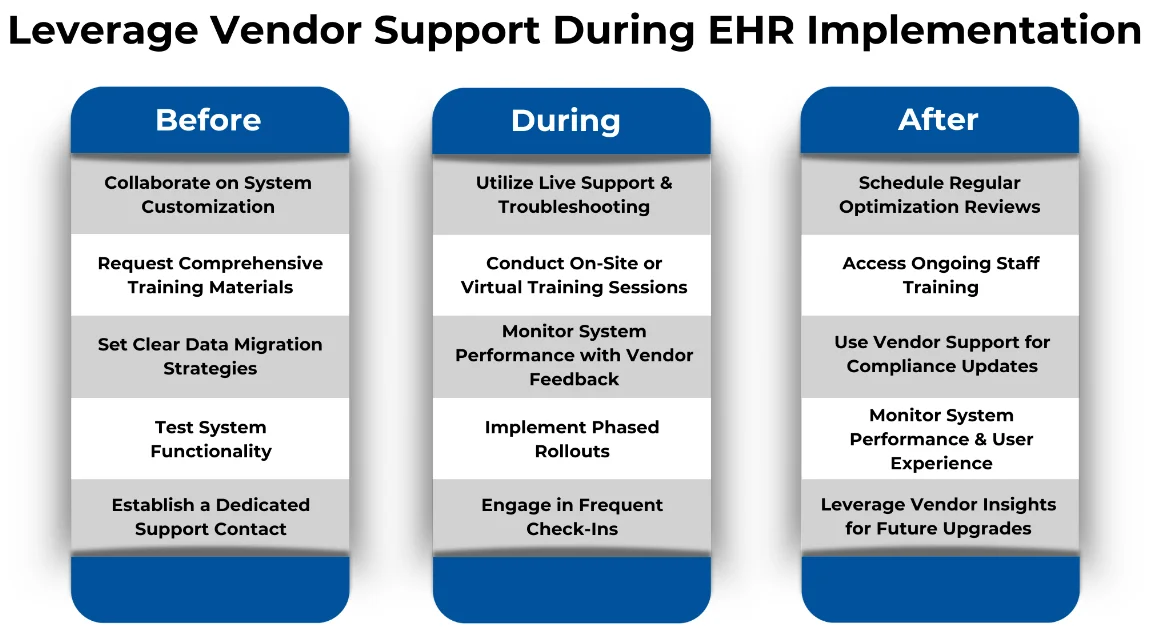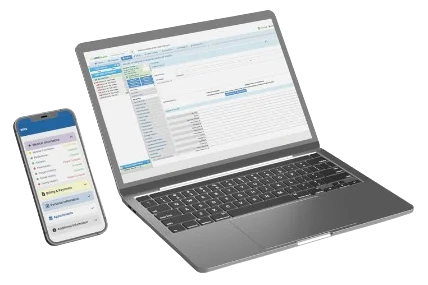Key Takeaways
- Thorough planning is essential for a successful EHR transition.
- Staff training and vendor support are crucial to on-boarding new healthcare data management software.
- Security and workflow integration must be prioritized to prevent avoidable issues in the future.
- Switching EHRs? Be fully prepared with our comprehensive guide.
If your EHR system isn’t amplifying and streamlining your medical practice, there’s a good chance that switching to better software would benefit your office. Though there is much to gain from a transition to the right EHR, changing healthcare data management software is a major step for any care team and should not be approached without a plan.
A well-executed implementation strategy can improve efficiency in the long run, ensure data accuracy, and impact overall workflow. Failing to plan properly can result in significant errors, disruptions, and missed opportunities to adopt ideal EHR protocols for your practice.
If you’re preparing to launch new software for your healthcare practice, create a plan that helps you avoid these five common EHR implementation mistakes.
Table of Contents
Mistake 1: Inadequate Staff Training
Bringing a new EHR system on board requires proper staff training before, during, and after the launch. Communicating with your team helps keep everyone on the same page. Afterall, new healthcare data management software will impact each team member’s daily workflow. Without adequate training, users may resist changes and struggle with the system, and may be more prone to errors, inefficiency, and frustration.
Properly prepare your team for the switch by:
- Providing hands-on training starting well before launch day.
- Offering continuous learning opportunities for staff.
- Working with your EHR vendor to provide customized training materials.
Mistake 2: Ignoring Workflow Integration
Each practice has unique workflows, and a poor EHR implementation can disrupt those processes. If the system doesn’t align with you, it can result in longer patient visits, staff frustration, and reduced efficiency. Consider the steps to bring on a new EHR system as a chance to assess your current workflow and reimagine what isn’t working.
Make the most of your EHR implementation by:
- Mapping out your current workflows and identifying areas for improvement.
- Customizing aspects of the EHR to best support your practice.
- Getting staff feedback early to accurately identify barriers to optimal patient care.
Mistake 3: Incomplete Data Migration
Migrating patient data from an old system (or paper records) to a new EHR can be complex. Poor execution may lead to lost or inaccurate patient data, impacting clinical decisions and the patient experience. Make sure you fully understand how your new EHR vendor handles migration. Keep lines of communication with your team and patients open as you navigate the process.
Create a thorough, and accurate, plan for data migration by:
- Organizing a structured migration to ensure a complete transfer.
- Working with your EHR provider to facilitate a seamless system and data transition.
- Verifying that critical patient history, prescriptions, and notes are successfully backed up prior to beginning the process.
Did you know? A poorly implemented EHR system can reduce practice efficiency by up to 50% in the first few months. Avoid common mistakes to ensure a smooth transition.
Mistake 4: Failure to Prioritize Security
EHR systems are prime targets for healthcare cyberattacks due to sensitive patient information stored in their databases. A lack of proper security measures can result in data breaches, HIPAA violations, and financial losses. When tackling the process of EHR adoption, your security systems can be vulnerable, putting your practice at risk.
Plan ahead to secure your incoming EHR by:
- Implementing multi-factor authentication (MFA) for system access.
- Regularly updating security protocols and conducting audits.
- Training staff on cybersecurity best practices to help prevent breaches.
Mistake 5: Skipping Vendor Support
There’s no way around it: bringing on a new EHR system is disruptive. However, it’s often the right decision for your practice in the long run because your team can better serve patients, optimize revenue, and operate more effectively. Remember to lean on your EHR vendor every step of the way and take advantage of the training time and materials they offer.
This collaboration remains important after your practice is up and running on the new healthcare data management software. Stay in touch with your EHR provider for continued training and process adjustments, as well as assistance issues with the system or lost productivity.
Take full advantage of your vendor support team by:
- Utilizing support and troubleshooting services, especially early in the process.
- Working closely with your vendor’s customer support team for ongoing education and updates.
- Scheduling regular check-ins to optimize system performance.

Ready for a Smooth EHR implementation?
Implementing an EHR that fits your medical practice is a significant step toward improving patient care, streamlining workflows, and enhancing overall efficiency. However, avoiding common mistakes—inadequate training, poor workflow integration, data migration errors, security oversights, and lack of vendor support—is crucial for a successful transition. By planning ahead, leveraging expert guidance, and prioritizing proper implementation strategies, your practice can maximize the benefits of a new EHR implementation without unnecessary setbacks. Take proactive steps before launching a new healthcare data management software system as you build a more efficient, secure, and patient-centered healthcare environment.






 QUICK CHARTING
QUICK CHARTING NOTE
NOTE MEDICATION
MEDICATION PATIENT
PATIENT BILLING
BILLING RISK
RISK MARKETING
MARKETING MIPS
MIPS